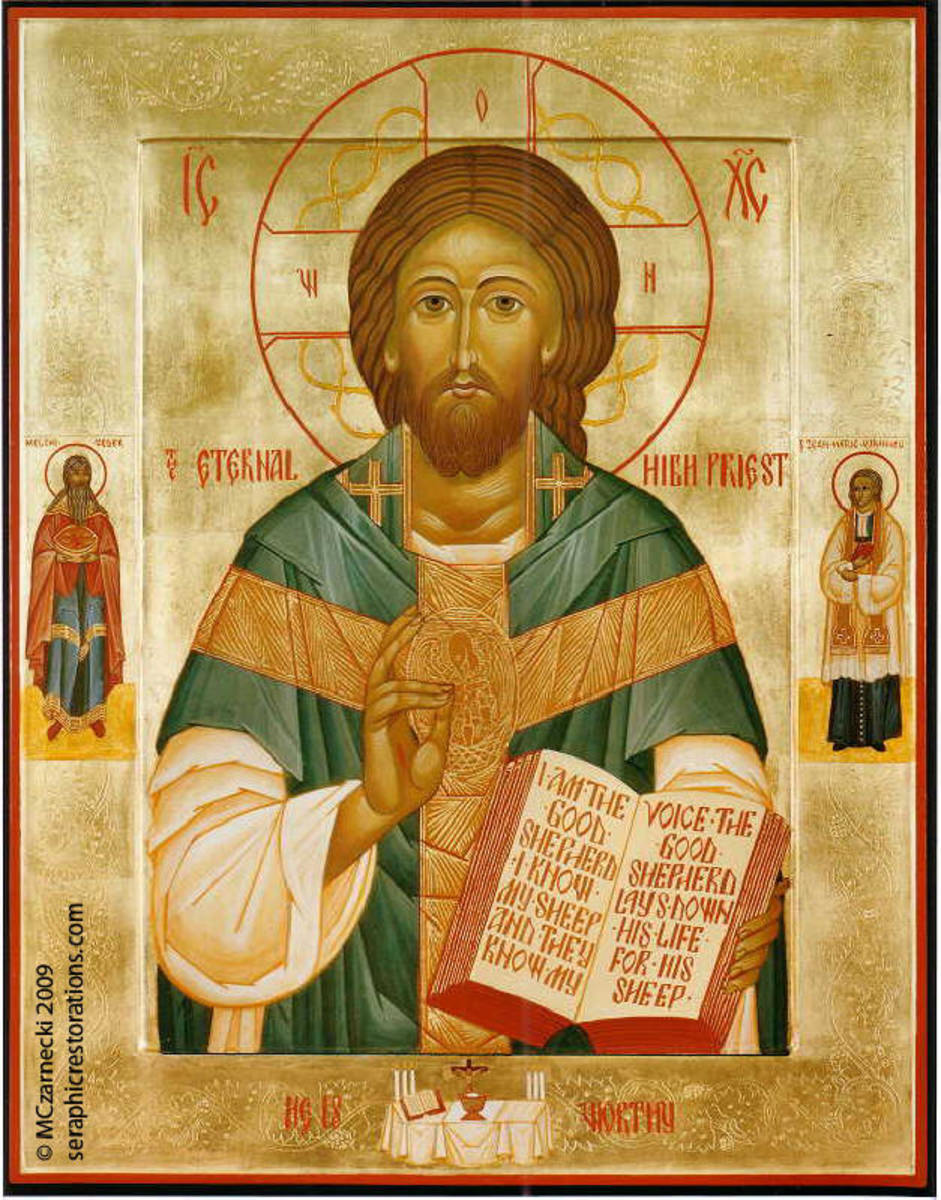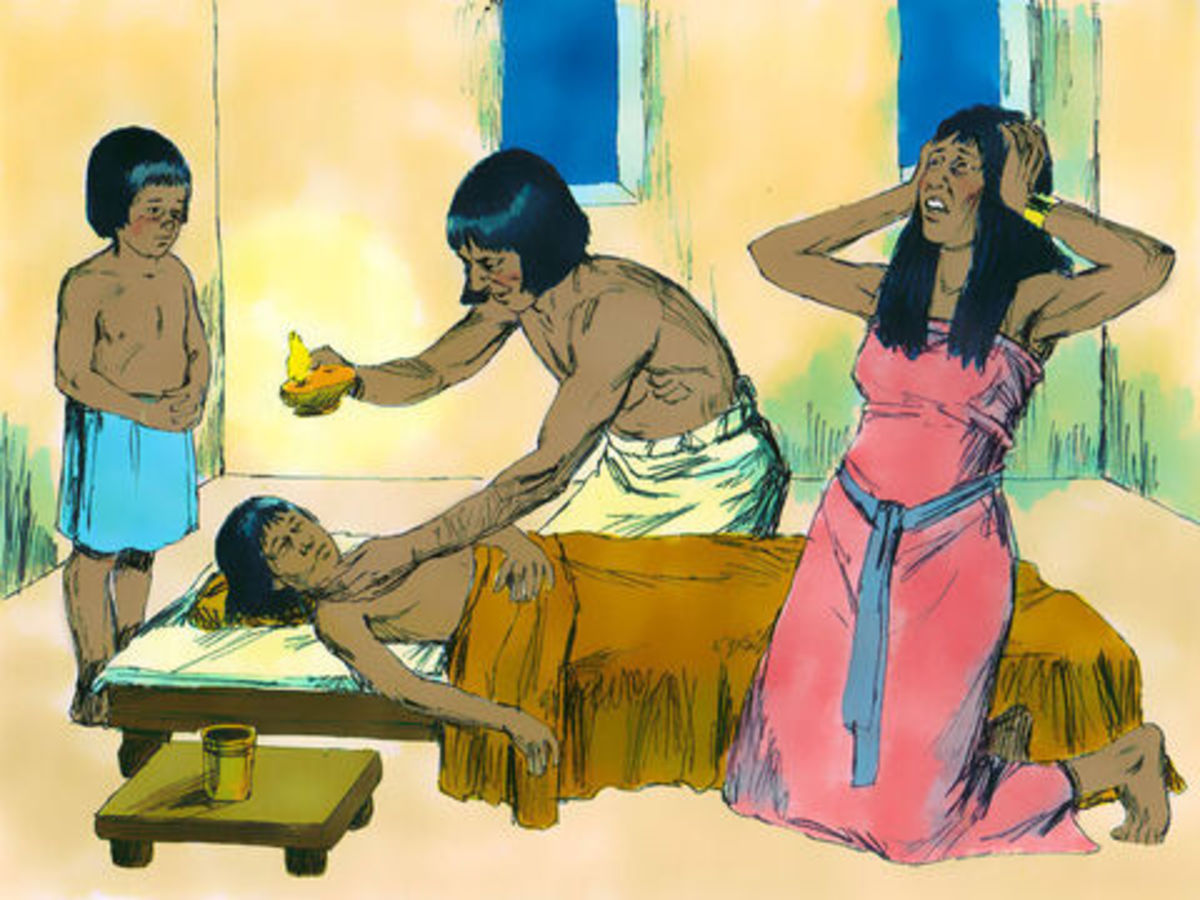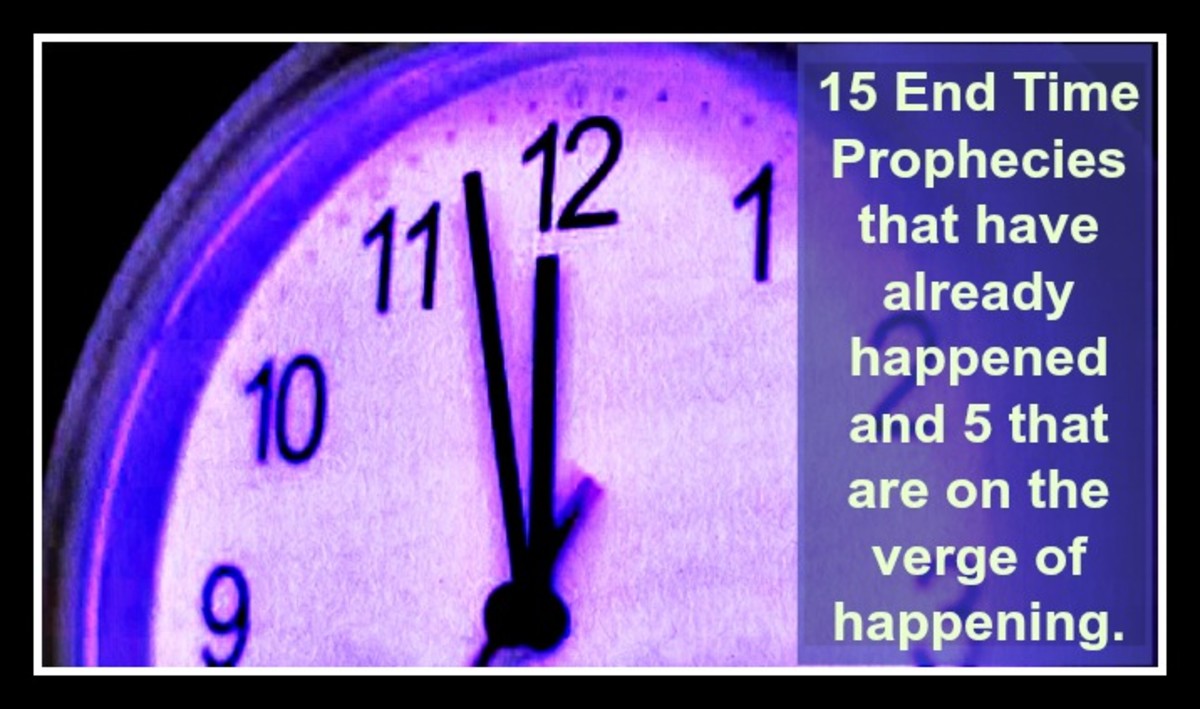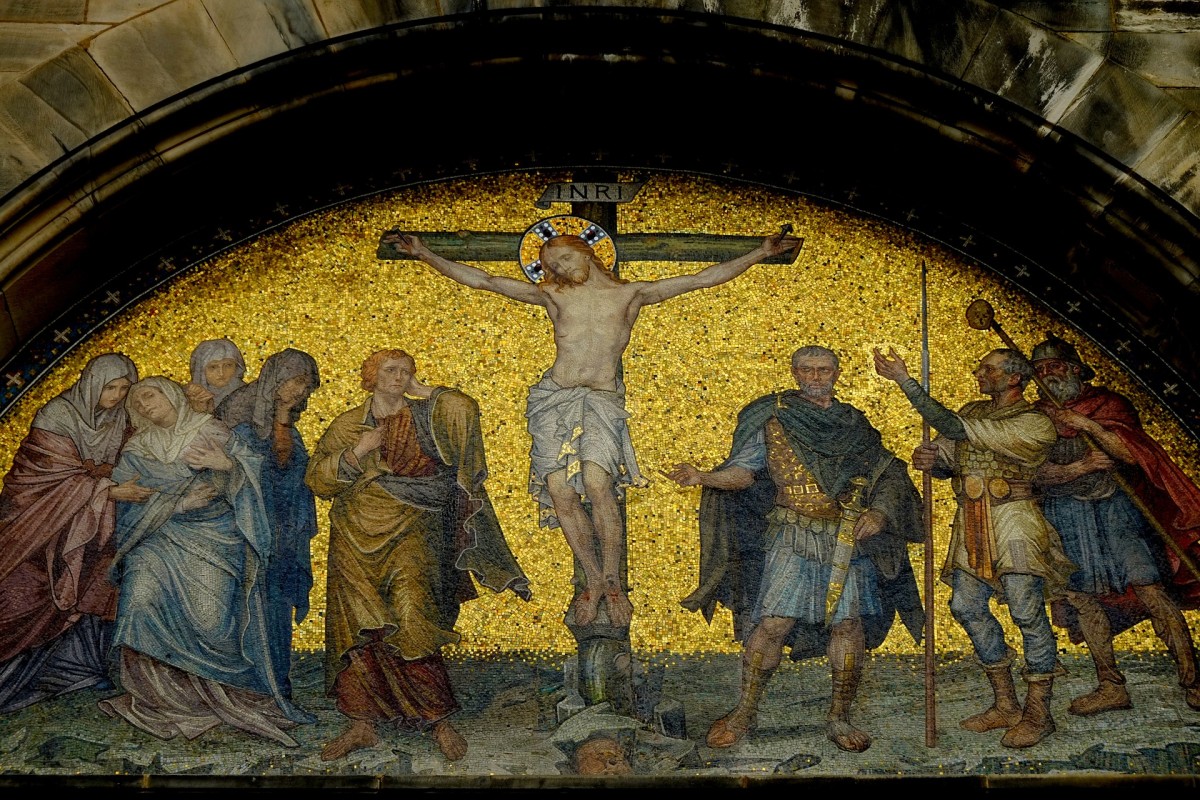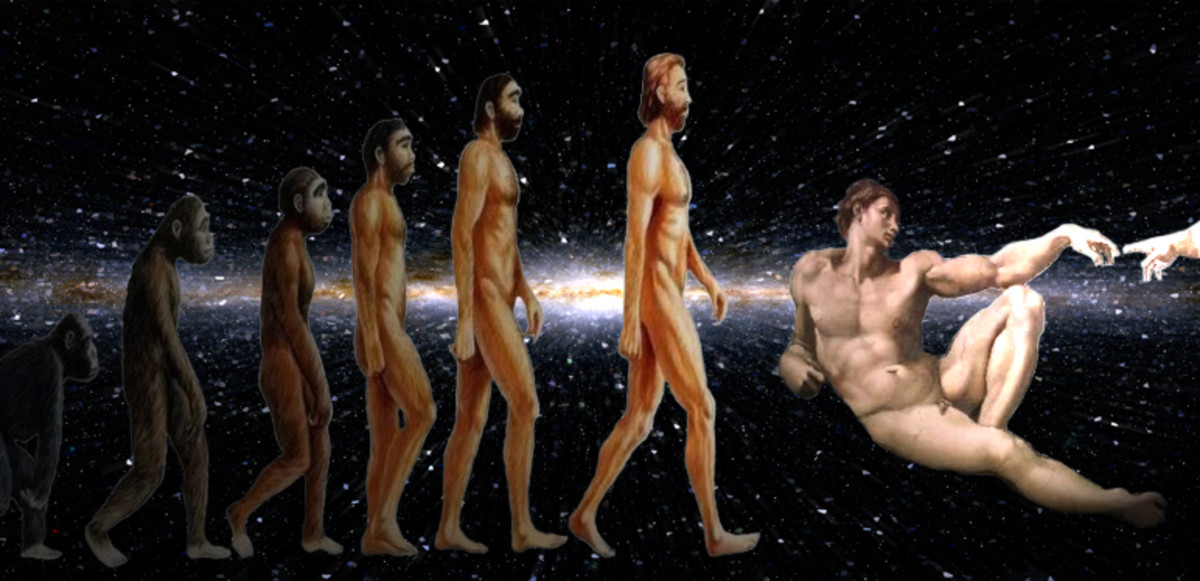ISRAEL: SEVEN SPECIES (1) WHEAT
Wheat - One of 7 species given to Israel when reaching the Promised Land
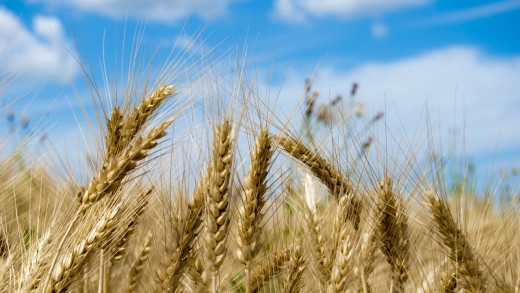
THE LAND OF MILK AND HONEY
After the death of Joseph, the Egyptians no longer remembered how Joseph saved them from famine and they were in bondage to the Egyptians. They toiled under hard labour and prayed to God for deliverance and God sent Moses, a Hebrew who was adopted by an Egyptian princess and grew up in the Egyptian king's household. He fled after he killed a Hebrew slave and exiled himself. After 40 years of exile, God chose Moses to lead the Israelites into the Promised Lord and God promised them a land of milk and honey. The Land of Milk and Honey would include seven species of food which would sustain them in the new land.
Deuteronomy Chapter 8:1 begins:
"All the commandment which I command thee this day shall ye observe to do, that ye may live, and multiply, and go in and possess the land which the LORD swore unto your fathers."
The land is described as a good land with the seven species:
"For the LORD thy God bringeth thee into a good land, a land of brooks of water, of fountains and depths, springing forth in valleys and hills; a land of wheat and barley, and vines and fig-trees and pomegranates; a land of olive-trees and honey;" (Deuteronomy 8:7-8)
Symbolism of 7 species
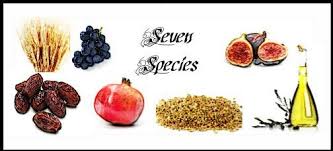
SYMBOLISM OF THE 7 SPECIES
The seven species of food symbolize the close relationship between the Jewish People and the Land of Israel.
- Rimon Season (pomegranate)—September/October—Rosh HaShanah/Yom Kippur/Sukkot
- Tamar Season (date/honey)—September/October—Rosh HaShanah/Sukkot
- Zayit Season (olive)—November/December—Hanukkah
- Te’ena Season (fig)—January/February—Tu B’Shevat
- Gefen Season (vine, grape)—March—Purim
- Wheat and Barley Season—April/May/June—Passover/Shavuot
Passover/Shavuot
Wikipedia
The date of Shavuot is directly linked to that of Passover. The Torah mandates the seven-week Counting of the Omer, beginning on the second day of Passover and immediately followed by Shavuot. This counting of days and weeks is understood to express anticipation and desire for the Giving of the Torah. On Passover, the Jewish people were freed from their enslavement to Pharaoh; on Shavuot they were given the Torah and became a nation committed to serving God.
Symbolism of Wheat - Charity and Love
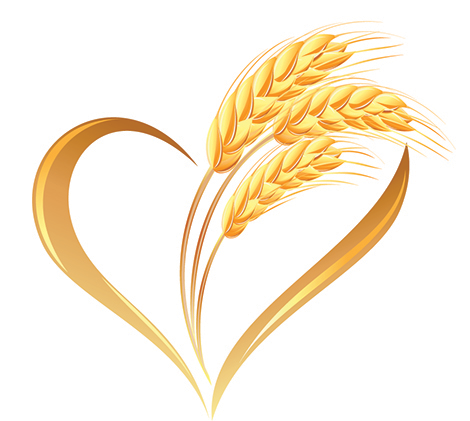
SYMBOLISM OF WHEAT
Answers.com
In the Old Testament wheat and bread are symbols of the fecundity of the earth. The New Testament associates the fruits of the earth—a gift of God to humankind—with the symbolism of wheat and associates the gifts of God with the hearts of humans (grace), especially in the parable of the good seed and the bad seed. Bread becomes the symbol of the supreme gift from God to humankind—eternal life, the body of Christ in the Eucharist: "Take this and eat, for this is my body."
In Hebrew "Bethlehem" means 'house of bread'. The city is located seven kilometers (five miles) south of Jerusalem and is considered the place of origin of the house of David and the birthplace of Jesus. In the Old Testament the Eternal sends manna to the Hebrews when they are crossing the desert (Exodus). Manna symbolizes bread and prefigures the Christian Eucharist. It is a sign of the generosity of God toward humankind. Jewish matzoh is an unleavened bread that is eaten to commemorate this event. In the Roman Catholic faith, unleavened bread is used to prepare the hosts for the Eucharist. The Orthodox Church uses leavened bread.
SYMBOLISM OF WHEAT in Shakespeare's Time
Did you know that in Shakespeare’s time, sheaves of wheat were carried in the wedding procession and sometimes tucked into the Bride’s veil? Wheat, while synonymous with Fall and all its bounty, is also a symbol of fertility. It is referred to as the “Giving Grain”, and because wheat was historically a sign of bounty and prosperity, it was also the incubus for the advent of the Wedding Cake.
Wedding Cake decorated with wheat

SYMBOLISM OF WHEAT
AdChat.net
Wheat and maize/corn are the universal symbols for agriculture and harvest. Because wheat is sown, grown and harvested, it can signify the cycle of birth, life and death as well as rebirth. In Christianity, wheat can signify Christ, thus life. Southwestern Native Americans regard corn as a sacred symbol of happiness and prosperity, and wheat germ as representative of man and the cosmos. The Mexican Sun Hero is symbolized by a maize plant and hummingbird. Wheat is sacred as a fertility symbol to multiple gods and goddesses throughout many cultures including the Canaanites, the Phrygians, Greeks, Romans and Christians. Wheat along with the grape is associated with the Eucharist and can represent the Virgin Mary as the mother of Christ. In heraldic art, the wheat sheaf is known as a garb and is sometimes used as the emblem of bakers.
Rest during Harvest on the 7th day

IMPORTANT RULES TO BE OBSERVED DURING HARVEST
There are many rules to be observed during harvest, but I have picked out the most relevant ones.
Offer first to God. Not to be commenced until the first fruits had been offered to God.
Leviticus 23:10
Speak unto the children of Israel, and say unto them, When ye be come into the land which I give unto you, and shall reap the harvest thereof, then ye shall bring a sheaf of the firstfruits of your harvest unto the priest:
Leviticus 23:14
And ye shall eat neither bread, nor parched corn, nor green ears, until the selfsame day that ye have brought an offering unto your God: it shall be a statute for ever throughout your generations in all your dwellings.
Exodus 34:21
Six days thou shalt work, but on the seventh day thou shalt rest: in earing time and in harvest thou shalt rest.
Legal provision for the poor during harvest.
Leviticus 19:9
And when ye reap the harvest of your land, thou shalt not wholly reap the corners of thy field, neither shalt thou gather the gleanings of thy harvest.
Leviticus 23:22
And when ye reap the harvest of your land, thou shalt not make clean riddance of the corners of thy field when thou reapest, neither shalt thou gather any gleaning of thy harvest: thou shalt leave them unto the poor, and to the stranger: I am the LORD your God.
Deuteronomy 24:19
When thou cuttest down thine harvest in thy field, and hast forgot a sheaf in the field, thou shalt not go again to fetch it: it shall be for the stranger, for the fatherless, and for the widow: that the LORD thy God may bless thee in all the work of thine hands.
NUTRITION
These 7 species of food sustained the Israelites during the Old Testament times. Most countries in the world use wheat as a staple food, especially in temperate countries.
Nutrition Facts and Information about Wheat:
It contains Manganese, Phosphorus, Magnesium and Selenium in very large quantities. Rich in Zinc, Copper, Iron and Potassium. However, Calcium is also present in small amounts.
Vitamin Content of Wheat:
It is rich in Vitamin B6, Niacin, Thiamin, Folate, Riboflavin and Pantothenic Acid. Vitamin E and Vitamin K are also present in small but considerable amounts.
Calorie Content of Wheat:
Wheat has a calorific value of 339.0 per 100 gm. Being a grain, it is very appropriate in calories and hence, filling as a food.
Health Benefits of Wheat:
Consumption of whole wheat is necessary for a healthy metabolism, as it prevents Breast Cancer, Gallstones, childhood Asthma and heart risks. Definitely an essential food to intake for women for gastro-intestinal health, also reduces risk of high blood pressure, Diabetes and high cholestrol. To add up to it all, it has phytonutrients which promotes better health through maintaining high blood levels.
PARABLE OF THE WHEAT AND TARES
Jesus' parable in Matthew 13:24-30.
Jesus instructs us to grow as wheat, not tares, so that we can lead productive, helpful lives and be included in His harvest of the righteous for the kingdom.
"The good seed," "the wheat," and "the sons of the kingdom" are referred to baptized members of God's church in whom the Holy Spirit dwells. They are the saints, the elect, and the righteous (Matthew 13:43). In the previous parable, the seed represents "the word of the kingdom" (verse 19), but the good seed is the product of the word received, and obeyed. Jesus, The Son of Man, as the Sower sows only good seed, and those who are righteous obey God, living His way of life, and becoming the "children of the kingdom" (I John 2:6; II John 6; I Thessalonians 2:10-15).
God's will is that Jesus Christ the Redeemer sow His seed in this sinful world of misery for training and testing them to become true witnesses for Him preparing them for the Kingdom of God. Jesus tells Peter in Luke 22:31 that he was wheat, and as such, he was to be sifted by Satan. All of God's saints should heed this warning to watch and pray that the enemy not sow tares in our heart. God has bought us with a price and given us His Spirit, making us new creations in Him and heirs of His kingdom. The Lord expects us to bear wheat and not tares in the field in which He has sowed us.
JESUS THE BREAD OF LIFE
Jesus represents the true wheat in the parable of the wheat and tares. He is the seed that dies and is resurrected again. Christ is the hope of the helpless millions of people mired in sin and all kinds of depravity. Faith in God leads them into life everlasting.
In John 6:35, Jesus claims to be the bread of life, "I am the bread of life: he that cometh to me shall never hunger; and he that believeth on me shall never thirst."
Jesus foretells his impending death in John 12:24 by saying, "Verily, verily, I say unto you, Except a corn of wheat fall into the ground and die, it abideth alone: but if it die, it bringeth forth much fruit."
The death and resurrection of Jesus Christ bring millions upon millions of Christians to believe in Him. We have to be grateful to the Messiah for bringing the message of hope to innumerable numbers of lost souls. God be praised! All glory to God.
Farm to Market: Wheat (clips)
Farm to Market: Wheat (clips) - YouTube
► 2:23► 2:23www.youtube.com/watch?v=ae_OBMFkaEAOct 23, 2009 - Uploaded by phoenixfilmandvideoFrom breads to pastas, wheat is the basis for many foods we eat. ...
Israel: Seven Species (1) Wheat
Do you agree that God was gracious to the Israelites for giving them wheat to eat without their planting when they reached the Promised Land?
Links
- Israel. Seven Species. Fruits and Vegetables of Holy...
The Hebrew Bible (TANAKH) describes Israel as a land blessed with seven fruits and grains:
© 2010 einron


